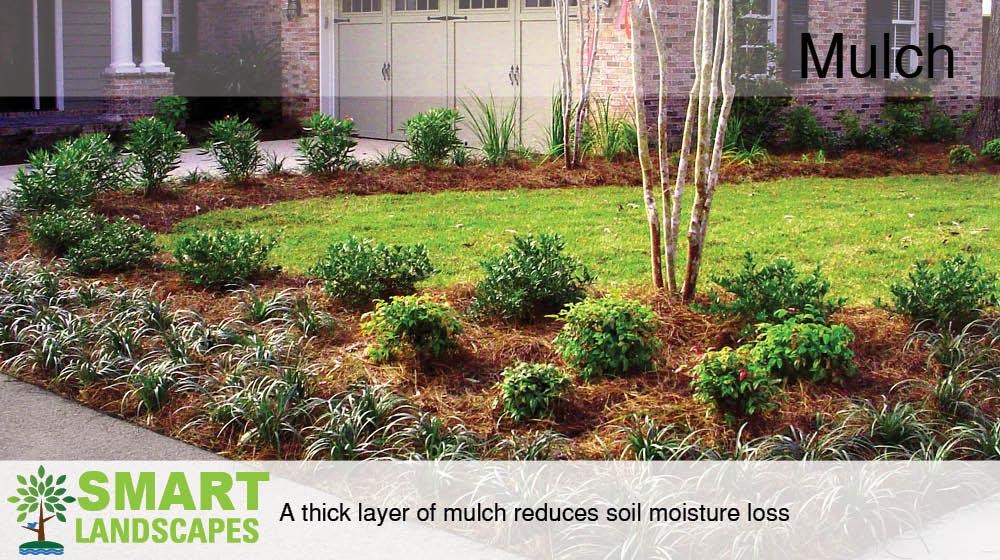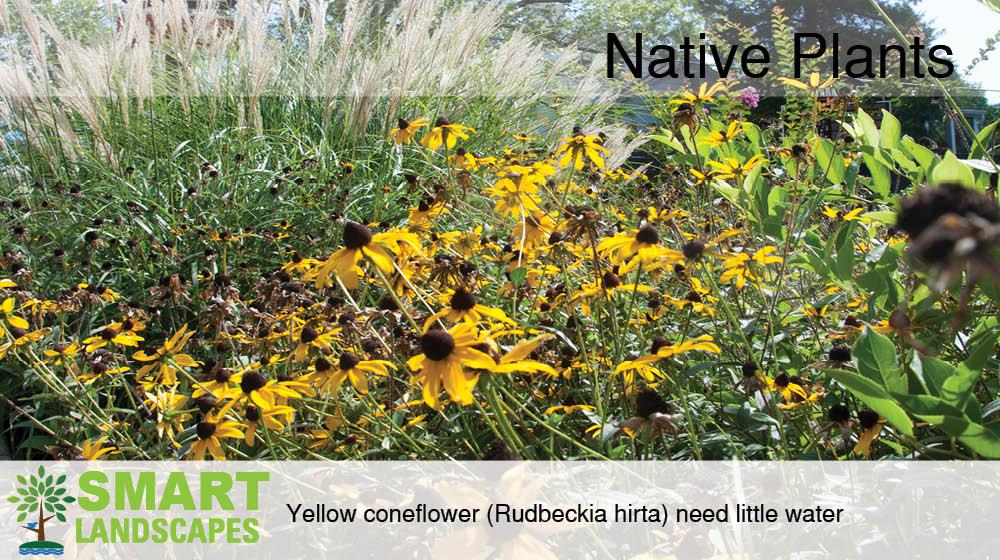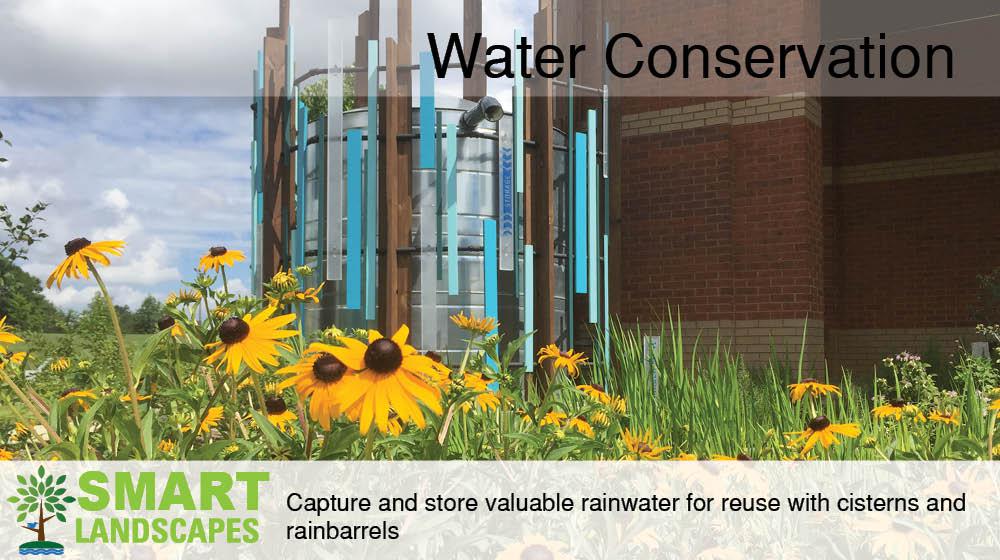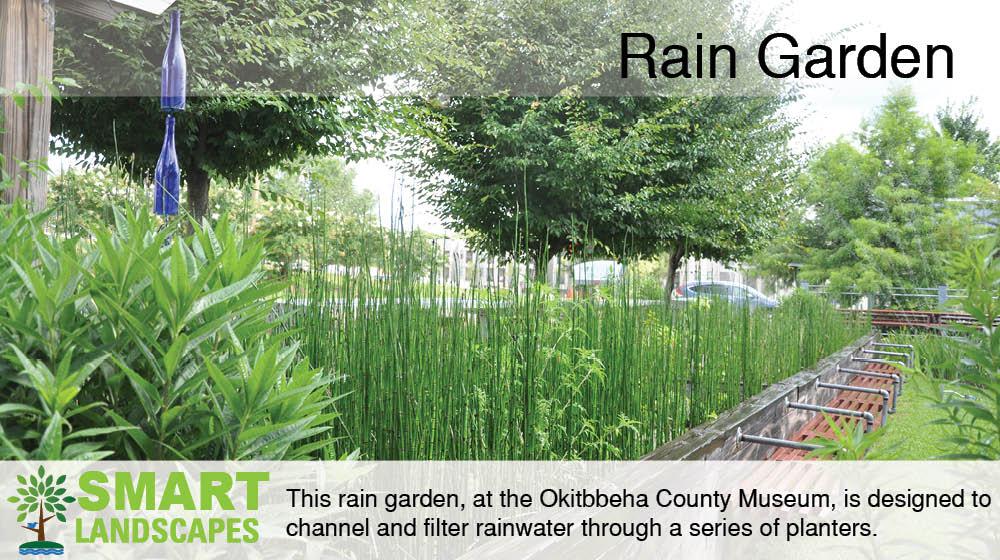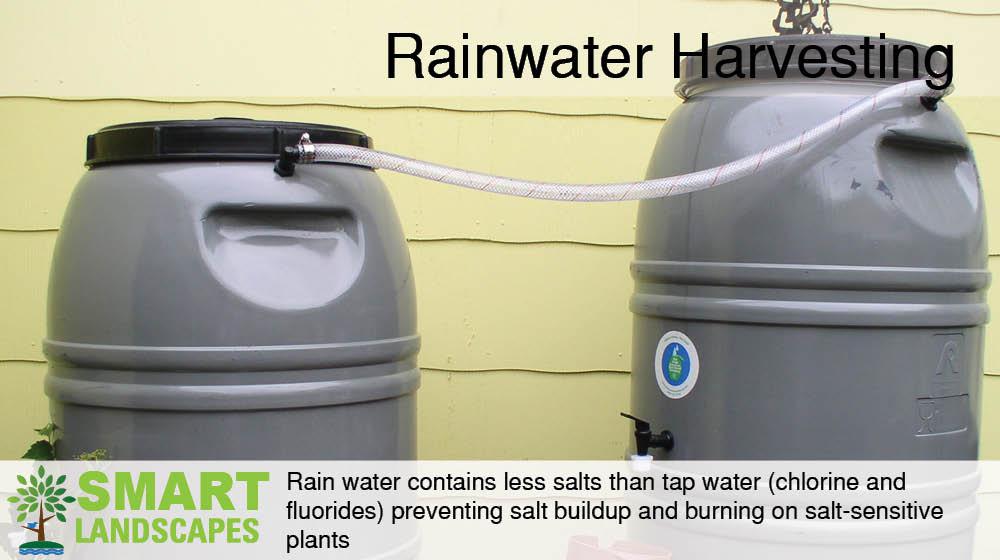Healthy Water Practices
Water Conservation in Your Landscape
Water plays a vital role in all landscapes. In addition to being required for plant life, it is also the lifeblood of any environment. The rain water that leaves your property is not isolated. This water overflows into a series of roadway ditches or drainage inlets, which lead to local streams, rivers, and, ultimately, the Gulf of Mexico. This stormwater picks up sediment, nutrients, and pollutants along the way, which can cause significant impacts to the health of Mississippi’s water bodies. In fact, according to the Mississippi Department of Environmental Quality, non-point source pollution (pollution that comes from a number of different non-specific sources, such as subdivisions or neighborhoods) is the leading cause of water pollution in the state of Mississippi, as well as in the nation.
There are a number of different things that you can do in your landscape that can improve or maintain the water quality of your property. Some techniques store or detain water temporarily in order to prevent flooding downstream, and others capture water so that it can be reused for watering plants. All of them result in a positive benefit to water management on your property.
Reduce watering needs.
According to the EPA, the United State "accounts for nearly 9 billion gallons of water each day, mainly for landscape irrigation. The average US household uses more water outdoors than for showering and washing clothes combined.” Homeowners can reduce their watering needs by using native plants that are adapted to the natural rainfall amounts, by choosing appropriate plants based on site conditions, and by grouping plants according to their water needs. Store and reuse rainwater by adding rain barrels and rain gardens. This will reduce your dependance on tap water.
Reduce stormwater runoff and improve water quality.
- Filter water before it leaves your garden.
- Reduce runoff so surrounding water bodies don’t overfill.
- Increase impervious surfaces so rain soaks into the ground.
- Create wetlands and retention ponds.
- Reduce non-point pollution.
The following documents detail some Smart Landscape compatible solutions and methods that are available
MSU Extension Service Publications

Water Conservation in Your Landscape
Water plays a vital role in all landscapes. In addition to being required for plant life, it is also the lifeblood of any environment. The rain water that leaves your property is not isolated. This water overflows into a series of roadway ditches or drainage inlets, which lead to local streams, rivers, and, ultimately, the Gulf of Mexico. This stormwater picks up sediment, nutrients, and pollutants along the way, which can cause significant impacts to the health of Mississippi’s water bodies.
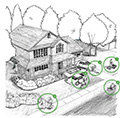
Managing Your Home Watershed
Because of gravity, water flows downhill. Rain that falls on your home will make its way into streams, rivers, lakes, and, eventually, the Gulf of Mexico. This water will also flow through your neighbors' gardens and other communities, positively or negatively impacting thousands of people. Before your home was built on your property, there was a dense native landscape such as a forest or prairie that naturally cleaned and absorbed much of the rain that fell there throughout the year. Your home, driveway, and other pavement greatly increases the amount of rainwater runoff that may pickup pollutants from your home watershed and carry them downstream. Your actions affect the cleanliness of the water as well as the quantity of water that, when combined with others’ runoff, may increase the flood risk. It is important to remember that this runoff affects not only you but also everyone else downstream, and we are all downstream.
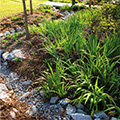
Community Watershead Protection
Long before your community was built, the sun evaporated water, which condensed in the sky and later fell as rain. This rain fell on forests or deep-rooted grasses. Water that wasn’t used by plants or infiltrated to become groundwater slowly made its way to streams, lakes, and rivers. This same process still happens today, but impervious surfaces such as parking lots and roofs do not allow water to infiltrate into the ground. Instead, large amounts of water move quickly to streams, lakes, and rivers. Increased flows can cause erosion and flooding. Along the way, rainwater also picks up pollutants such as oils, fertilizers, and pesticides that can harm the water resources that are needed by plants, animals, and people.
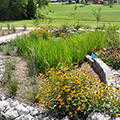
Rain Gardens
Rain gardens are stormwater drainage areas that temporarily store rainwater until it can filter into the soil. Rain gardens do not permanently store water, and they have surface water only during and shortly after rainfall events. When properly designed, rain gardens should have surface water for only few days, which is not long enough for mosquito eggs and larvae to develop into adults.
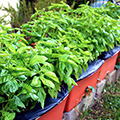
Sub-irrigated Containers for the Mississippi Gardener
Sub-irrigated containers offer a successful gardening alternative for gardeners with limited spaces. They are perfect for small yards, porches, or even balconies. While this publication primarily addresses vegetable gardening, sub-irrigated containers are also good at growing flowering ornamentals.

Water: Sink to Sea
It’s important to make smart choices regarding water use. Knowing the source of your drinking water is the first step toward protecting it.
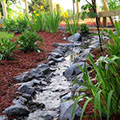
Protecting water quality for drainage areas, ponds, and stream channels
Communities are under increased pressure to improve water quality in local streams and waterways in urban and suburban areas. Pollution in these areas occurs from rainwater runoff from commercial or residential properties, including your own backyard. As developed communities contain expansive buildings and pavement, water runoff carries oil, chemicals, soil, and fertilizers to local waterways, which can seriously harm water quality and aquatic life. This type of non-point source pollution is the primary source of stream contamination in the United States. There are several easy steps that you can take to ensure that your property is not degrading the water quality of your area.
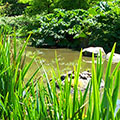
Creating Water Features in the Landscape
From quiet shallow ponds to the active spray jets in a formal pool, water can provide just the right element for the many moods of a landscaped space
Additional Resources
Principles Of Xeriscape Design
Water – Use It Wisely campaign
http://wateruseitwisely.com/100-ways-to-conserve/landscape-care/principles-of-xeriscape-design/
Rain Gardens
The City of Durham, North Carolina
https://durhamnc.gov/787/Rain-Gardens
WaterSense Water-Smart Landscapes guide
Environmental protection Agency
https://www.epa.gov/sites/production/files/2017-01/documents/ws-outdoor-water-efficient-landsc aping.pdf
Reducing Stormwater Runoff
Alabama Smart Yards Handbook
http://www.aces.edu/pubs/docs/A/ANR-1359/ANR-1359.pdf
Chapter #9 pg 47-56
Reducing Stormwater Runoff
The Florida Yards & Neighborhoods Handbook
http://www.floridayards.org/landscape/The_Florida_Yards_and_Neighborhoods_Handbook_Web.pdf
Chapter #8 pg 43-45
Stormwater Control Ponds
Alabama Smart Yards Handbook
http://www.aces.edu/pubs/docs/A/ANR-1359/ANR-1359.pdf
Chapter #10 pg 61
Reclaim Your Rain: Rain Gardens for Home Landscapes
http://www.cleanwateratlanta.org/EnvironmentalEducation/Reclaim.htm
News
The Mississippi State University Extension Service was part of a team that received a national award in July for innovation in conservation efforts.
The Soil and Water Conservation Society gave the Conservation Innovation Award to the One Good Idea online platform, which is a component of a larger project led by Beth Baker, associate Extension professor in the MSU Department of Wildlife, Fisheries and Aquaculture, and involves five multi-state partners.
Success Stories
Billy Mitchell spent his childhood summers in the water and has lived at Pelahatchie Bay for more than three decades, so his dedication to protecting water resources now almost makes too much sense.
Sledge Taylor is no stranger to cover crops —he first planted vetch on 100 acres of his Panola County farmland in 1979—but he has ramped up his cover crop usage and added other sustainable agricultural practices over the past 15 years.
Brian Andrus irrigated exactly zero times on his Sunflower County farm in 2021. He didn’t even turn on his well.

